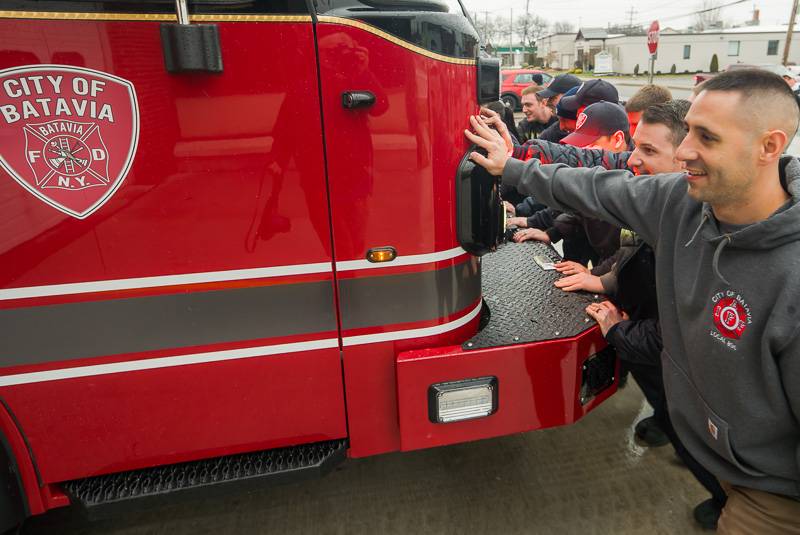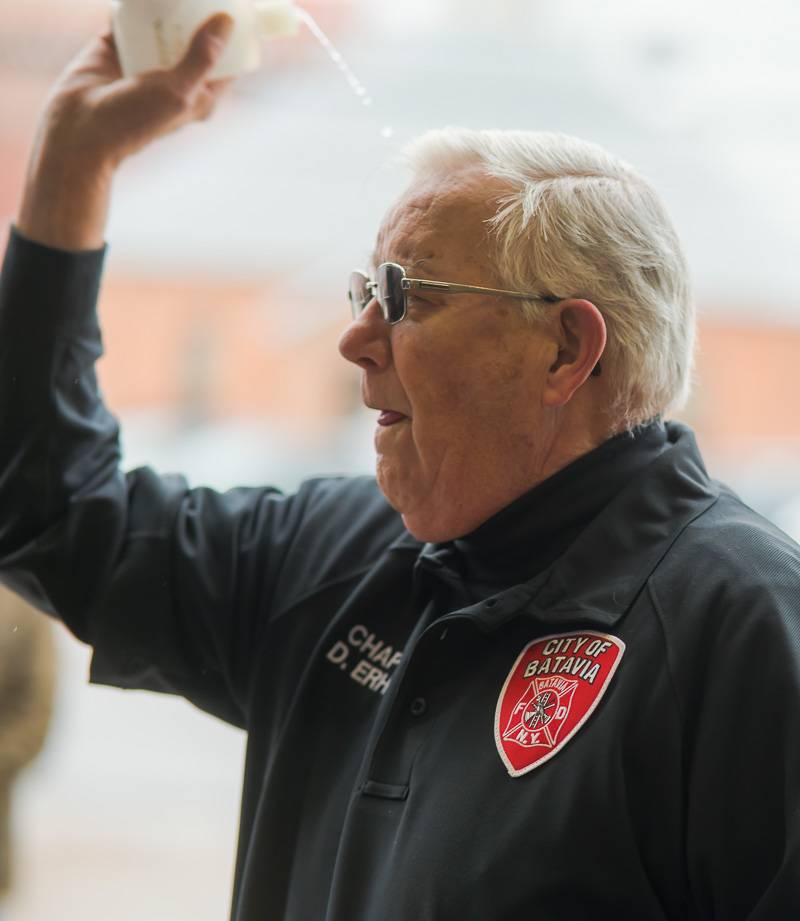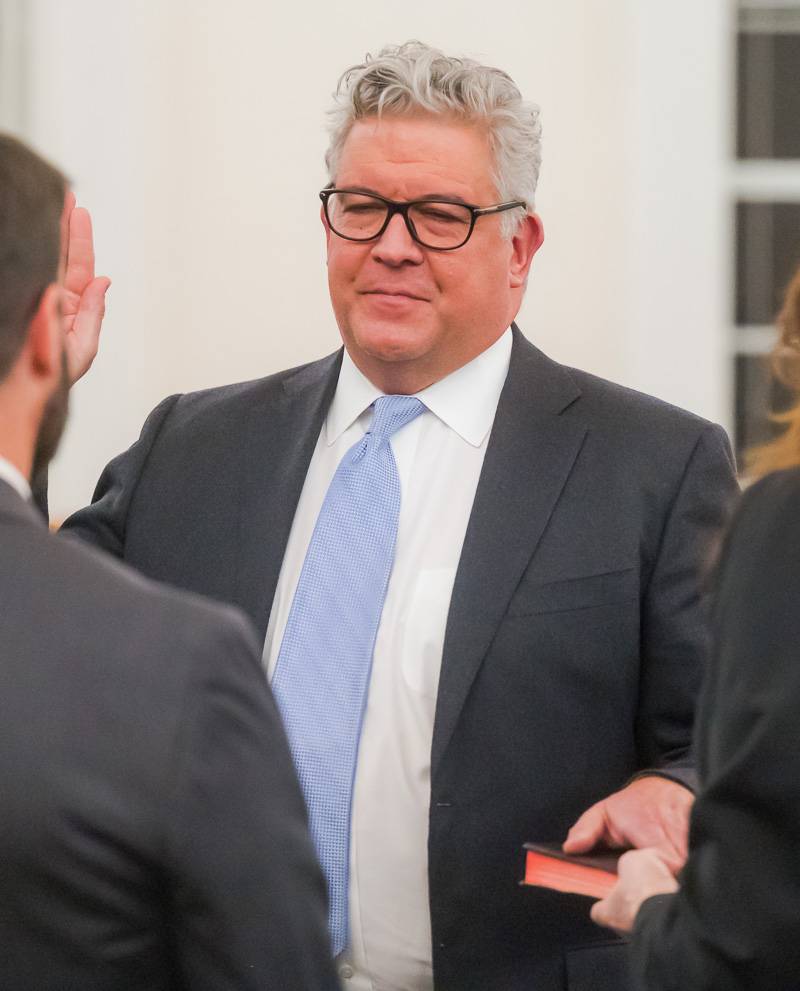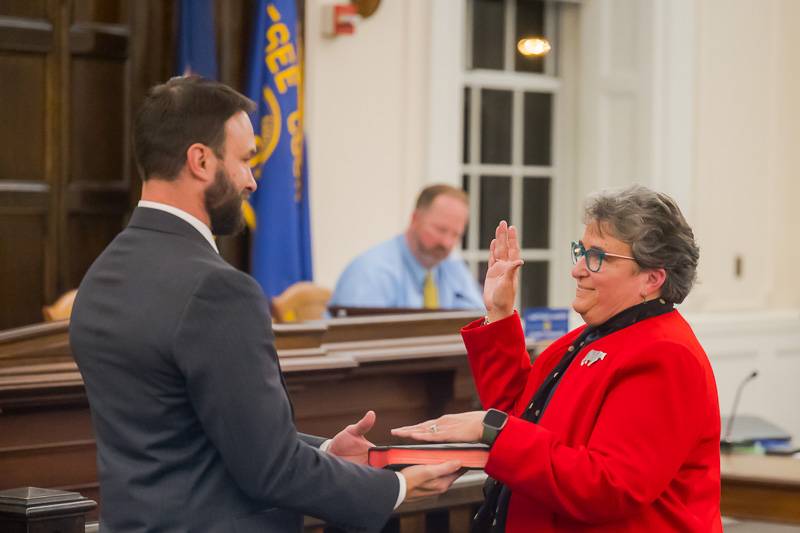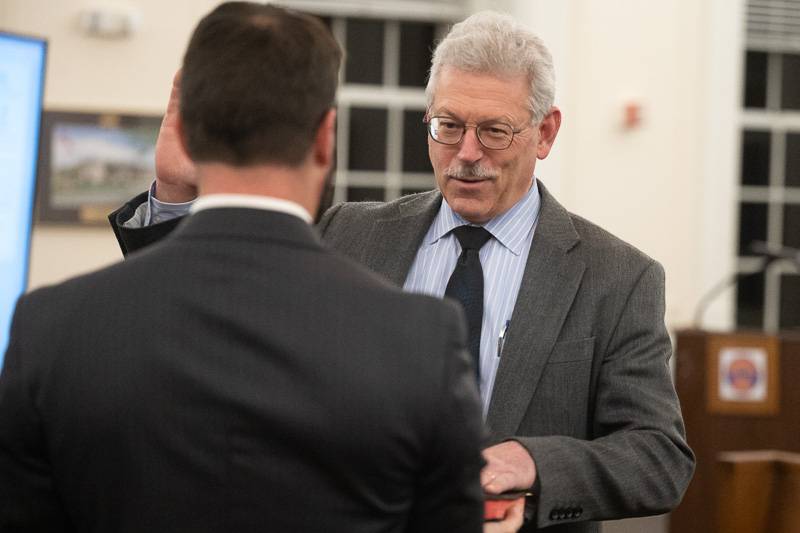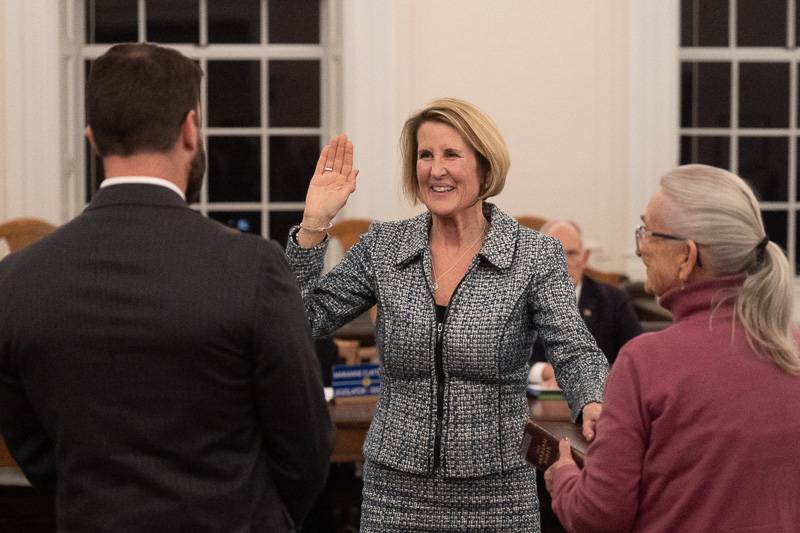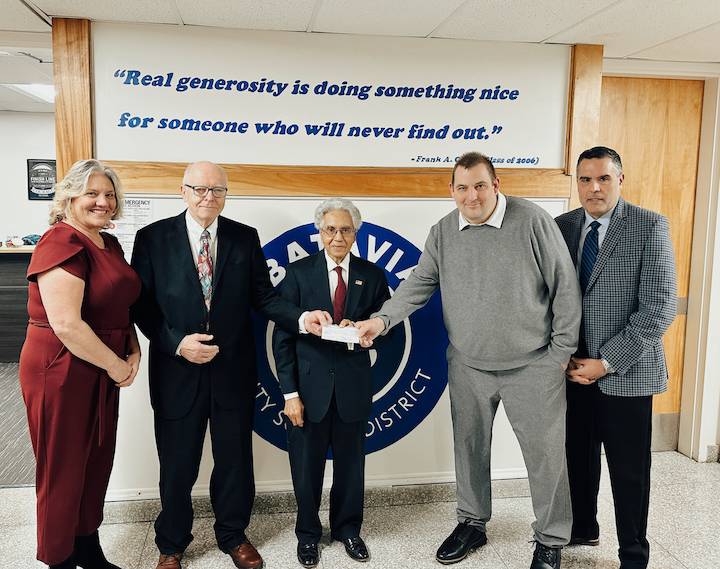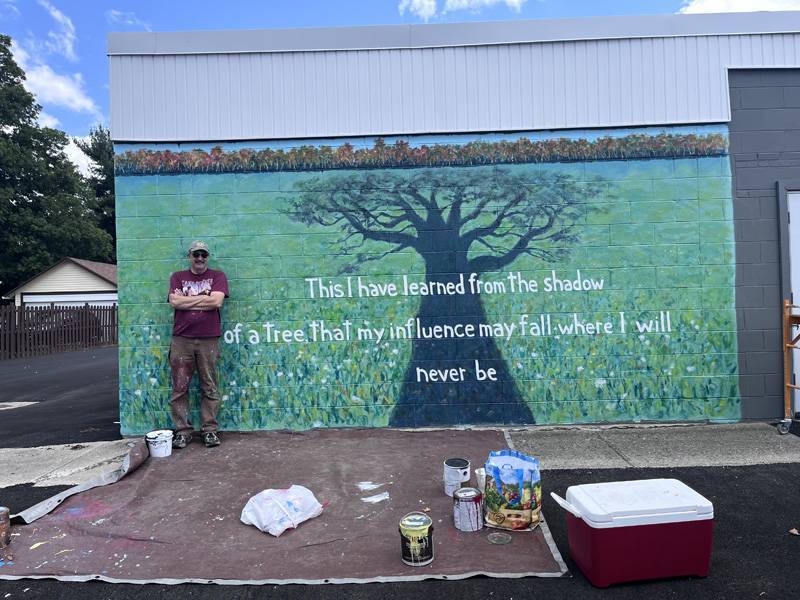Victor A Rivera-Cotto, 55, of Batavia, was charged on Dec. 25 with criminal contempt first, assault third, and two counts of criminal mischief fourth. It’s alleged that Rivera-Cotto violated an order of protection by striking the victim in the face and damaging their phone, in order to prevent her from calling for help. Rivera-Cotto was arraigned in CAP Court and remanded to the Genesee County Jail on $5,000 cash bail, $10,000 bond, and $20,000 partially secured bond. He is due in Batavia City Court on Tuesday.
On Dec. 21, Michael J. Difalco, 36, of Batavia was charged with menacing, second and criminal possession of a weapon, third. Difalco allegedly threatened another person with blunt object during an altercation on South Main Street. He was arraigned in Batavia City Court and remanded to the Genesee County Jail, without bail. He is due back in court on Jan. 18.
On Dec. 21, James N. Difalco, 27, of Batavia was charged with criminal obstruction of breathing after an investigation into an altercation on South Main Street where Difalco allegedly obstructed the breathing of another person by applying pressure to their neck. He was issued an appearance ticket and is due in Batavia City Court on Tuesday.
Benjamin G. Evans, 35, of Batavia was charged Dec. 22 on three bench warrants. The first warrant stems from an incident on July 7, where he allegedly stole a package from the porch of a residence on State Street. The second is the result of an incident on Sept. 19, 2023, where Evans was allegedly found in possession of narcotics. The third warrant stems from an incident on Oct. 13, 2023, where he allegedly stole a package from a porch on Union Street. Evans was arraigned in Batavia City Court and remanded to Genesee County Jail. He is due back in court on Jan. 16.
On Dec. 22, Taiya J Rolle, 19, of Batavia was arrested for DWI. Rolle was arrested after a traffic stop on Walnut Street, where she was allegedly found to be operating a vehicle while intoxicated by alcohol. She was issued appearance tickets and is due in Batavia City Court on Jan. 17.
Matthew J. Mika, 53, of Batavia, was charged Dec. 16 with criminal possession of a controlled substance, seventh, criminal use of drug paraphernalia, second, and tampering with physical evidence. Mika was charged after an investigation into a traffic stop in October 2023, when he was allegedly found to be in possession of narcotics and drug paraphernalia. It’s also alleged that he attempted to conceal evidence. He was issued an appearance ticket for Batavia City Court.
On Dec. 15, Sarah E. Saile, 40, of Batavia, was charged with grand larceny, fourth, and criminal possession of a controlled substance, seventh. It’s alleged that Saile stole in excess of $1,000 worth of prescription pills from the pharmacy at Tops, where she was employed. She was issued an appearance ticket for Batavia City Court.
Angelo P. Mana, 49, of Batavia, was charged on Dec. 15 on a warrant for burglary, third, petit larceny, criminal mischief, fourth, and conspiracy, fifth. Mana was charged in relation to an incident that occurred on Oct. 23, where he and another person allegedly broke into a building on Mill Street and stole property. He was arraigned in CAP Court and is due to appear in Batavia City Court at a later date.
On Dec. 18, Brant G. Matthews, 29, of LeRoy, was charged with criminal possession of a controlled Substance, seventh, and criminal use of drug paraphernalia, second. It’s alleged that Matthews was found to be in possession of narcotics and a digital scale while being arrested on an unrelated warrant. He was issued an appearance ticket and is due in Batavia City Court on Jan. 9.
Jeanna M. Hattaway, 36, of Warsaw, was charged on Dec. 13 with criminal possession of a controlled substance, seventh. The arrest stems from a traffic stop on April 21, 2023, when Hattaway was allegedly found in possession of methamphetamine. She was issued an appearance ticket and is due in court on Jan. 9.
On Dec. 14, Thomas A. Griffin, 36, of Batavia, was charged with criminal possession of a controlled substance. seventh, and driving while ability impaired by drugs. Griffin was arrested after an investigation into an incident on July 31, 2023, when police responded to the parking lot of 7-Eleven to check the welfare of a person slumped over the wheel of a vehicle. Griffin was allegedly found to be operating the vehicle while impaired by drugs. He was issued an appearance ticket and is due in Batavia City Court on Jan. 2.
On Dec. 6, Jon H. Bush, 40, and Jennifer K Freeman, 39, both of Batavia, were charged with criminal possession of a controlled substance, seventh. Bush and Freeman were charged in relation to a traffic stop on Washington Ave on 6/30/2023, where they were both allegedly found to be in possession of narcotics. Bush was also arrested on an outstanding warrant and additionally charged with resisting arrest. Both were issued appearance tickets for the drug charges. Bush was arraigned in Batavia City Court on the warrant and released on his own recognizance.
On Dec. 17, Danielle T. Lumpkin, 42, of Batavia, was charged for criminal mischief, fourth. It’s alleged that Lumpkin damaged a door at the victim’s residence. Lumpkin was issued an appearance ticket and is due in court on Tuesday.
On Dec. 15, Michael J. Difalco, 36, of Batavia, was charged with harassment, second. It’s alleged that Difalco pulled another person’s hair and punched them during an altercation on South Main Street. He was issued an appearance ticket.
John A. Cabrera, 56, of Batavia, was charged Dec. 12 for menacing, second. Cabrera allegedly threatened another person with an imitation gun during an argument on Washington Avenue. He was arraigned in Batavia City Court and released. He is due back in court on Jan. 17.
On Dec. 11, Chad M. Johnston, 37, of Batavia was charged with burglary, second, and criminal mischief, third. It’s alleged that on Dec. 6, Johnston unlawfully entered a residence on Liberty Street and damaged property inside. Johnston was arraigned in Batavia City Court and remanded to the Genesee County Jail. He is due back in court on Jan. 17.
On Dec. 4, Tyler M. McCambridge, 30, of Syracuse was charged with attempted grand larceny, fourth, possession of a forged instrument, first, obstructing governmental administration, second, and harassment, second. McCambridge allegedly attempted to cash a forged check, at a local bank. He then ran from police when they attempted to take him into custody. McCambridge was arraigned in Batavia City Court and released under the supervision of Genesee Justice.
On Dec. 8, Michael C. Mirabel, 51, of Batavia was arrested for Driving While Ability Impaired by Drugs. Mirabal was initially stopped on Central Avenue for a traffic violation. After an investigation, it’s alleged that Mirabal was found to be operating the vehicle while impaired by drugs. He was arraigned in CAP Court and released. He is due back in court at a later date.
On Dec. 13, Aaron R. Hatfield, 39, of Kenmore, was arrested on a bench warrant. Hatfield was initially arrested in August 2023, and charged with petit larceny and criminal possession of a controlled substance, seventh, after allegedly stealing from Tops. The warrant was issued after Hatfield allegedly failed to appear in court. He was arraigned in Batavia City Court and remanded to the Genesee County Jail on $5,000 cash bail, $10,000 bond, and $25,000 partially secured bond.
Patrick J. Gonzales, 30, of Batavia was charged Dec. 9 for obstructing governmental administration second and harassment, second. Gonzales was arrested after police responded to a residence on Highland Pk for the report of a disturbance. During the investigation, it’s alleged that Gonzales pushed an officer and attempted to prevent police from taking him into custody. He was issued an appearance ticket and released. Later that night patrols responded back to the residence for a medical call. Gonzales then allegedly attempted to prevent police and EMS from assisting another person. He was charged with another count of obstructing governmental administration, second, and issued another appearance ticket.
On Dec. 3, Byron K. Bell, 54, of Rochester was charged on a bench warrant. Bell was initially charged on Dec. 11, with Criminal Possession of stolen property, third, aggravated unlicensed operation of a motor vehicle third, and speeding after a traffic stop where he was allegedly found to be in possession of a stolen vehicle. The warrant was issued when Bell failed to appear for a court appearance. He was arraigned in CAP Court and remanded to the Genesee County Jail.
On Dec. 2, Daniel J. Bakowski, 43, of Batavia was arrested on an arrest warrant. Bakowski was initially charged on Oct. 3, 2023 with aggravated unlicensed operation of a motor vehicle, third, and failure to stop at a stop sign after a traffic stop on East Main Street. The warrant was issued after he failed to appear in court. Bakowski was arraigned in CAP Court and released. He is due back in court at a later date.
Michael Robert Hawkins, 27, was charged with driving while impaired for a previous conviction designated offense within 10 years and driving while ability impaired by drugs with prior conviction designated offense in 10 years, for an incident at 12:49 a.m. Dec. 27, Genesee County Sheriff’s deputies said.
Hawkins, of Route 98, Attica, was charged after he was allegedly found asleep at the wheel of his vehicle while the vehicle was running on the shoulder of Route 98 in the town of Alexander. After an investigation, it is alleged that he was impaired by drugs and it was unsafe for him to operate a motor vehicle. During a search of his vehicle prior to the charge, deputies located a quantity of cocaine. Hawkins was charged and transported to Genesee County Jail for processing. He was also charged with CRIM possession of a controlled substance, failed to use/improper use of four-way flashers, and stop/stand/park violation on a highway. He was held pending a CAP Court arraignment.
James Gerard Smith, of Richley Road, Corfu, was charged with operating motor vehicle with.08 percent of 1 percent or more alcohol in blood first offense, deriving while intoxicated first offense and speed not reasonable and prudent for an incident that happened on Christmas, Genesee County Sheriff’s deputies said. Deputies were dispatched at approximately 7:32 p.m. Dec. 25 to 94497 Snipery Road in the Town of Darien for a vehicle off the road into a tree. Upon arrival, Deputy Alexander Hadsall spoke with the operator of the vehicle, Smith, 62, who reportedly stated that he swerved for a deer in the roadway. Smith was given standardized field sobriety tests and it was allegedly determined he was intoxicated by alcohol, Deputy Hadsall said. Smith was charged and taken to Genesee County Jail for processing. He is to return at 4 p.m. Jan. 16 to Darien Town Court.
A Batavia man was charged with criminal possession of a controlled substance, seventh degree, and obstructing governmental administration, second degree, after being arrested for multiple active warranted on Dec. 26, Genesee County Sheriff’s deputies said. Ronald James Murray, of Wood Street, allegedly attempted to prevent deputies from apprehending him while attempting to execute the warrants. Murray was also allegedly found to be possession of fentanyl at the time of arrest.
Gregory Patrick Hamm-Johnson, 33, of Batavia, was charged with obstruction of breathing, harassment, second, and endangering the welfare of a child on Dec. 24 after he allegedly struck and hit another individual during the course of a dispute in the presence of a juvenile, Genesee County Sheriff’s deputies said. Hamm-Johnson was taken into custody and held at Genesee County Jail pending CAP Court.
A 40-year-old man was charged with criminal possession of a controlled substance, seventh degree, operating a motor vehicle unlicensed and aggravated unlicensed operation of a motor vehicle, second degree, Genesee County Sheriff’s deputies said. Mark Joseph Konwicki, no address listed, was stopped on Dec. 17 near the Relax Inn in Batavia for a loud exhaust violation, deputies said. Konwicki was also charged for use of a motor vehicle without an interlock device and no muffler. He is to appear at 3 p.m. Jan. 9 in Batavia Town Court.
Lyndsay Taylor Young, of Route 98, Batavia, was charged on Dec. 26 with criminal contempt in the first degree for allegedly violating an order of protection issued out of Batavia Town Court after previously being convicted of criminal contempt in the second degree within the preceding five years, Genesee County Sheriff’s deputies said. Young was to appear in CAP Court.
